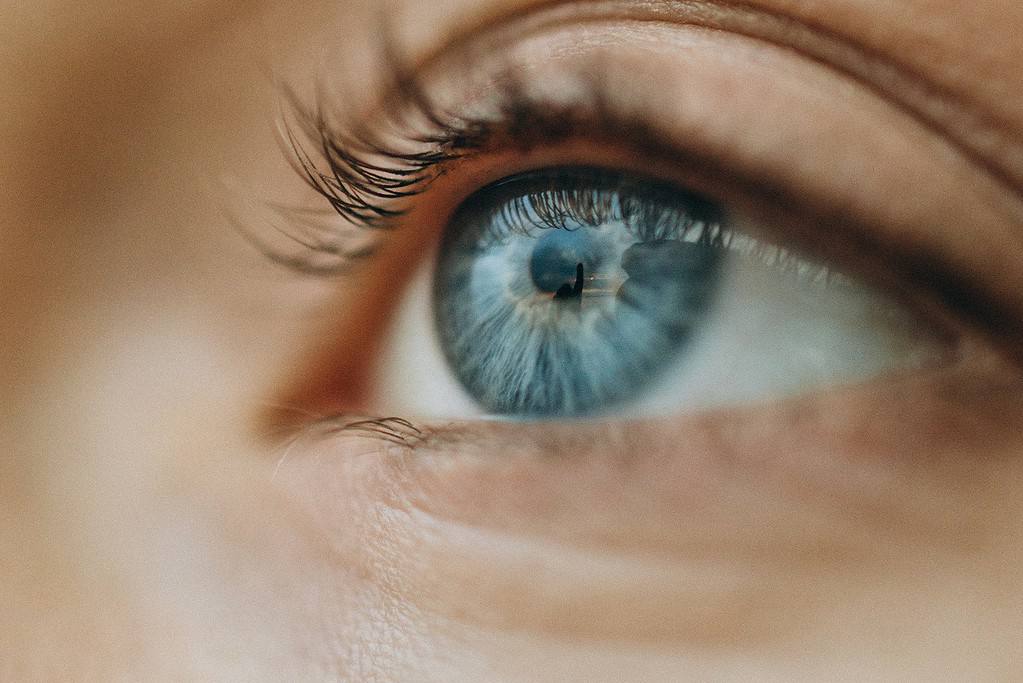The “Cocktail Party Effect,” is a remarkable showcase of our auditory system’s capabilities. In the whirl of a bustling party, filled with clinking glasses, laughter, and overlapping conversations, you can sometimes tune into one specific conversation, effortlessly filtering out everyone else’s words.
Essentially, the cocktail party effect is a phenomenon that describes the ability of the human auditory system to focus on a single auditory source, like a conversation, in a noisy environment, such as a crowded room or a “cocktail party.” But why does this phenomenon happen?
According to research pioneered decades ago by Colin Cherry (and continued in several other studies), this cocktail party effect has more to do with our brains than our ears.

We don’t live in rooms of pin-drop silence. How often have you actually been in a situation devoid of any auditory stimulus? Not too often I’d bet. Rather, we live in a noisy world full of stimuli.
From the minute we wake up to the minute we fall asleep — we’re slammed with so much sound. The commotion of traffic, construction work, dogs that don’t stop barking, people talking — these are all just some of the daily noises we hear. How do we bear such routine cacophony? Well, as with most things human, we have our brains to thank for that ability.
Our ability to focus on a specific sound source is not just a passive effect; it’s an active, cognitive function. The brain’s attention networks are constantly at work, determining which sounds are relevant and deserving of our focus. This phenomenon involves both the selective amplification of the desired sound and the suppression of unwanted background noise.
The ability to filter out sounds
It isn’t just auditory information that we receive on a daily basis. Every day, we’re bombarded with sights, touch, smells, and tastes. But we have the ability to tune all that extra information out.
Imagine you’re walking down a road with a friend and the two of you are engaged in deep conversation. With every step you take, you notice and absorb a lot of external information. Maybe there’s a bakery a few meters down the road, from which wafts the smell of fresh-baked sourdough. Suddenly, the skies turn glum and moody. There’s (loud and unpleasant) traffic passing by. In spite of all these external stimuli, somehow you still manage to focus your attention on your friend.
You have the ability to filter words and other noises that your brain perceives as unnecessary. Instead, you only focus on what your friend is saying.

Now stop imagining because chances are you’re familiar with this phenomenon. Sure, it may not be walking with a friend but a social gathering; or a party; or just any noisy environment in which you’re talking to someone. This everyday experience — this is precisely what the cocktail party effect is.
What is the Cocktail Party Effect?
The effect refers to the incredible human ability to tune out background noise — and focus on a single speaker or stimulus. The effect was studied by Edward Collin Cherry, a British scientist. In the early 1950s, and Colin Cherry conducted two experiments. In these experiments,, he explored the differences in the perception of continuous speech when using one ear versus when using two.
In the first experiment, Cherry fed two distinct audio messages, voiced by the same individual, to both ears of the listener. The listener just had one task: to repeat one of the messages word-for-word. Essentially, all they had to do was to separate the messages.
In his second experiment, he switched things up a bit. Again, he fed a listener two distinct audio messages. Again, both these messages were voiced by the same individual. So what did he do differently? He fed one distinct message to each ear. Effectively, each ear of the listener was listening to a different distinct message — albeit simultaneously.
Colin Cherry’s experiments
Listeners struggled a lot in the first experiment. It wasn’t that they couldn’t do the task at all but rather how long it took them to successfully accomplish it. For instance, listeners would replay the audio repeatedly, almost ten or twenty times before being able to sufficiently separate the messages. In his now famous paper, Cherry described just how much active effort listeners had to use to accurately focus.
“At the subjective level the subject reported very great difficulty in accomplishing his task. He would shut his eyes to assist concentration,” wrote Cherry in his seminal paper.
Remarkably, Cherry noticed that in his second experiment — the listeners were able to clearly discern and focus on a particular distinct message — absorbing information from at least one, completely.
Cherry attributed this sudden ease to an ability to willingly focus on a particular message using one ear while actively rejecting the other one being perceived in the other ear.
“To use a loose expression, the “processes of recognition may apparently be switched to either ear at will,” penned Cherry.
So basically, this is what it comes down to with this effect. According to Cherry, the cocktail party effect is down to the fact that we can use one ear to sort of hyper-focus on one source of audio while rejecting other sources of audio from the other. Neat, eh?
The filtering phenomenon
The world is effectively just a large cocktail party. It’s overbearing and overwhelming; filled with a lot of people (each one louder than the last), shiny lights, and tasty food. If all these things don’t mean party I don’t know what does.

In this never-ending party that is life — how do we focus on any one single thing? According to science, it isn’t a matter of focusing harder on a single source of stimuli as much as it is tuning other irrelevant stimuli.
Remember how Colin Cherry figured out we can reject “unwanted” audio sources? Turns out, we’re pretty good at that — almost embarrassingly good.
As part of his work, Cherry was also interested in trying to figure out exactly what factors of speech we choose to ignore. For instance, imagine you’re sitting in a room filled with people. Within the room, people break off into smaller groups — each discussing something different. As you’re discussing something important with your group, you have the ability to hear the chatter of the groups in the background. Yet, the question remains: although you can hear the chatter — how much do you actually perceive?
Say, if one of the people in the room switched languages and began conversing with their group in German — would you notice?
If you answered ‘yes’, I’m remiss to say that the answer isn’t as simple as that. In matters concerned with high levels of concentration, chances are you wouldn’t notice a change in language. As a matter of fact, the only thing you might conclusively notice is that the noise in the room was human in nature.
Attention to this effect
What about the sounds that we filter out? Are those just lost? Not technically. Although we do not actively dedicate effort to absorb and process the rejected message we still recognize and retain parts of it. Take zoning out, for example.
It’s happened to all of us: we’ve all zoned out of conversation. Usually, if we’re lucky, we get away with it by routine head nods and occasional grunts of “Totally” yet in those few tricky instances, we’re reduced to apologetically mumbling something along the lines of “Wait, what?”
In his 1986 paper, D A Norman, dubbed this embarrassing instance the “what-did-you-say” phenomenon. According to Norman, there exists a temporary memory from which you can fish up pieces of the conversation you missed out on. However, it’s important to distinguish that pieces of the “rejected” message can only be recalled in an extremely short period of time — the “rejected” message is not stored in long-term memory.
Implications beyond social gatherings
The cocktail party effect is more than just a curious phenomenon about our brain. It can have implications in the real world.
Understanding how we focus on speech in noisy environments is vital for designing effective hearing aids and communication systems. Advances in technology are increasingly incorporating principles from the cocktail party effect to improve speech clarity in challenging auditory environments.
The principles of selective auditory attention are also relevant in educational and workplace settings. In classrooms and offices, where multiple conversations and noises are common, understanding how we focus on relevant sounds can inform better acoustic design and noise management strategies.
That’s why researchers are still looking into this with so much interest.
Recent Studies on the cocktail party effect
Despite decades of research, the cocktail party effect still holds mysteries.
Remember how we mentioned vowels? The humble vowel plays a crucial role in speech intelligibility, especially in noisy environments. Vowels typically carry more acoustic energy and are longer in duration compared to consonants, making them more prominent in speech. In the context of the cocktail party effect, the ability to clearly hear and process vowels becomes essential for understanding speech amid background noise.
For individuals with hearing loss, distinguishing these vowel sounds can be particularly challenging. Hearing loss often affects the ability to hear certain frequencies, which can include the frequencies at which vowels are pronounced. This difficulty can significantly impair one’s ability to focus on a specific conversation in a noisy setting, as the clarity of vowel sounds is crucial for recognizing words and following a conversation.
It’s also more than just about hearing. Hearing and sight sometimes interact with each other in surprising ways.
In a way, these two senses go hand-in-hand. Think about it this way: you hear a croak while hiking up a trail — you look to the ground to spot a frog. In the same way, when we hear a car horn when crossing a sidewalk, we look at the road behind us — not at the sky. However, it isn’t always that easy.
Let’s go back to the frog-on-a-trail example for a minute. Imagine: You’re on the hiking trail again. You hear a croak and look to the ground, finding a cute lil’ green frog. As you try to get a closer look, he hops away. Following his croaks, you try to track him down only to find him in a pond with hundreds of his other frog buddies, all huddled together — croaking their hearts out. Suddenly, it isn’t as easy as just looking down to find your frog buddy.
Basically, sight helps inform hearing and vice-versa. This isn’t exactly breaking news. Again, we’ve known for a long time that the senses work in tandem. What is new, however, is how senses work in tandem in cocktail party (or multi-speaker) settings. That is a newer, and much narrower question; one that three scientists from Boston University have been working on.
How gaze plays a role in cocktail party settings
In a study published just this year, researchers from the University aimed to investigate the effects of sight (or gaze) in cocktail party or multi-speaker settings. They used multiple loudspeakers, arranged in front of a listener, each placed at different angles — 15 degrees apart –from each other. Each speaker played out loud a sequence of four digits (like 1-2-3-4) for the listener. Each sequence was numerically distinct and spoken by different human speakers. All sequences were played at the same time.
The listener’s task was to recite the sequence played from a particular target loudspeaker. It’s a tricky enough ask with all the sequences playing at once yet the experiment has another twist up its sleeve.
In some cases, listeners were instructed to direct their gaze toward a non-target loudspeaker while they were attempting to recite the sequence of the target loudspeaker. Else, listeners were allowed to gaze at the target loudspeaker
The researchers used eye-position trackers to track gaze. Additionally, listeners’ head positions were also considered as a variable and hence stabilized using neck rests.

The scientists observed that when listeners performed the task best when they directed their visual acuity toward the target loudspeaker, as opposed to when they looked at a non-target loudspeaker.
As per Virginia Best, the principal investigator of the study, the outcome of the study demonstrates how helpful visual information is in cocktail-party situations.
“Our task is theoretically applicable to any situation in which there are competing voices, including parties, restaurants, and meeting rooms,” Best said,” said Best in a press release.
Why research on cocktail-party situations matter
We don’t just use our sense of hearing in actual cocktail parties. The research concerning this effect has much greater, real-world applications. For instance, Best’s team was keen to conduct the study not just to help establish the influence of gaze in multi-speaker situations but to also help advance research related to hearing impairment.
“Our primary motivation was an intuition that eye position may be especially critical within these (cocktail party) situations, where there is substantial energetic and informational masking. A secondary motivation was our interest in visually guided beamforming, where the eyes are used to steer a highly directional hearing aid,” opined Best.
Currently, over 1.5 billion people in the world suffer from some form of hearing loss in at least one ear. This makes multi-speaker situations incredibly stressful for a lot of people.
How multi-speaker situations affect hearing impairment and hearing loss
A study from 2021 shed light on just how hard cocktail party situations are for those affected by hearing impairment or hearing loss.
The study, conducted by researchers from the Oregon Health and Science University, revealed that a lot of hearing-impaired folks blend together different sounds in cocktail party situations. This happens because of a processing issue — known as binaural pitch fusion — at the sensory level.
It means that if you receive different sounds — of differing pitch — in each of your ears, instead of processing the sounds as different, you’ll process the sounds as fused — and of the same pitch.
Basically, if you’ve got binaural pitch fusion, your ears can’t process different pitches simultaneously.
Lina A.J Reiss, one of the authors of the study– and hearing impaired herself, explained that binaural pitch fusion was one of the reasons, that made multi-speaker situations tough for people struggling with hearing impairment.
“This differs from what people with normal hearing experience in what is known as the ‘cocktail party effect. People with normal hearing can separate and understand the multiple voices, but they (people with hearing impairment) just get confused about which voice is saying what,” expressed Reiss in a press release.
Conclusion
If it seems like the cocktail party is ever present, that’s because it is. The effect isn’t even just limited to humans. From birds to frogs (yes, the ones huddling together); multiple species of animals have some physiological mechanism that helps them deal with noisy situations.
Take birds for example. Imagine you’re a male bird returning to the nest of his mate and you’re running a bit late. Ideally, you’d like to inform the missus but how can you make sure that she hears you over the cackle of noises ringing through the forest?
There’s that pesky cocktail party problem again. Except this time it’s not a cocktail party — it’s a canopy, not a canapé.


